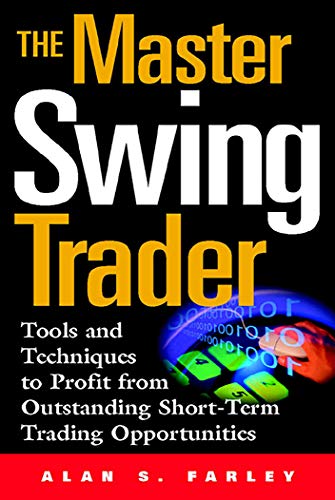Contrarian strategy is arguably a powerful technique. However, contrarian trading is also a risky tactic for short-term speculators.
Contrarian trading is a trading strategy in which traders intentionally go against the current market trend. Consequently, contrarian traders will buy when others are selling and sell when others are buying.
This method supposedly enables them to catch the turn-around trend as early as possible. However, is contrarian trading more profitable than going along with the prevailing trend? To answer this question, we have to examine several studies related to contrarian trading.

The Origins of Contrarian Strategy
It needs to be noted that contrarian strategy emerged in the stock market. One of the most well-known contrarian investors is billionaire Warren Buffett who famously advised, "Be fearful when others are greedy, and greedy when others are fearful."
The theory is that markets are vulnerable to herding tendencies, which are exacerbated by fear and greed, causing stock prices to be overvalued and underpriced on a regular basis. The contrarian seeks stocks that are now trading at a discount compared to their intrinsic value, in order to profit when prices go back up.
Lots of stock investors became successful due to early buying during market slumps. It is quite understandable because stock prices tend to suffer temporary setbacks during economic downturns, although their companies are actually quite prospective and still strong financially. When the market rebounds, such stocks will definitely go up as their performance rises along with economic recovery.
Does Contrarian Strategy Also Work in Short-Term Trading?
Done right, the contrarian strategy is arguably a powerful technique. However, it is frequently a risky tactic that could take a long time to pay off. Another disadvantage is the necessity to devote a significant amount of time to stock research in order to identify discounted prospects.
These drawbacks make the strategy suitable for long-term stock investment, but is it fit for short-term trading in stocks and other markets? Several research studies have proven the unreliability of contrarian trading results.
A paper titled "Short-Term Contrarian Investing-Is It Profitable? Yes and No" by Darren D Lee et al (Journal of Multinational Financial Management, 2003) investigated short-term contrarian investment strategies in the Australian stock market using weekly data of stocks comprising the All Ordinaries Index between 1994–2001. They found that profits are not related to bid-ask bounce, seasonality, or volume. Instead, profits are largely related to firm size, or more specifically, market overreaction to firm-specific information. Worse still, all profits evaporated due to transaction costs when they applied a short-term contrarian strategy practically.
Lee et al argued that contrarian trading may not be viable as a stand-alone strategy. Rather, it may enhance other strategies for managed funds.
The paper is in line with prior research by Andrew W Lo and A Craig MacKinlay that was published in "When Are Contrarian Profits Due to Stock Market Overreaction?" (The Review of Financial Studies, 1990). Lo and MacKinlay noted that contrarian profits more from large stocks than smaller stocks, and market overreaction is the sole source of contrarian profit.
Another paper titled "Profitability of Short-Term Contrarian Strategies: Implications for Market Efficiency" by Jennifer Conrad, Mustafa N Gultekin, and Gautam Kaul (Journal of Business & Economic Statistics, 1997) explored the application of contrarian trading in NASDAQ-NMS stocks and NYSE/AMEX stocks. They also found that any remaining profits disappeared at trivial levels of transaction costs. Conrad and Gultekin rebutted a previous article by Lehmann (1990) that showed how a relatively simple contrarian strategy yields consistent profit in the short run.
So, Is Contrarian Trading More Profitable?
Contrarian strategy may be more profitable in the long run, but it is not suitable for short-term trading. There are three reasons why contrarian trading may not be as rewarding as you wish:
- Prices may need more time to turn around.
- Higher transaction costs in comparison to short-term returns.
- Contrarian trading does not necessarily work well for all types of assets.
One more thing to note: If the research results are correct in that large stocks are able to produce better yields in contrarian trading practices, then you may need more capital to carry out the strategy. In this context, following the trend may be easier for short-term traders.

 Dedicated FREE FOREX VPS
Dedicated FREE FOREX VPS Free FOREX Virtual Private Server
Free FOREX Virtual Private Server MT4 Demo Contest, Get $500
MT4 Demo Contest, Get $500 Sign Up for an Account, Claim 60% Deposit Bonus
Sign Up for an Account, Claim 60% Deposit Bonus Free MT4/MT5 VPS 2024
Free MT4/MT5 VPS 2024 Send E-mail and Get Free Merchandise
Send E-mail and Get Free Merchandise $1K Refer a Friend Bonus for Pepperstone Pro clients
$1K Refer a Friend Bonus for Pepperstone Pro clients Maximize Your Earnings with 100% Deposit bonus
Maximize Your Earnings with 100% Deposit bonus Trade to Win, $5,000 Monthly Demo Contest
Trade to Win, $5,000 Monthly Demo Contest Claim 30% + 15% Deposit Bonus from LiteFinance
Claim 30% + 15% Deposit Bonus from LiteFinance













1 Comment
Carol Danvers
May 31 2022
Trading contrarian isn't certain to be profitable, especially when we just have a small amount of time to make our trades.
When trading over a short period of time, it is best to avoid engaging in contrarian trading. Due to the high transaction fees involved and the lengthy amount of time required to wait for the price to rise, contrarian trading is not a good choice for many different kinds of assets.